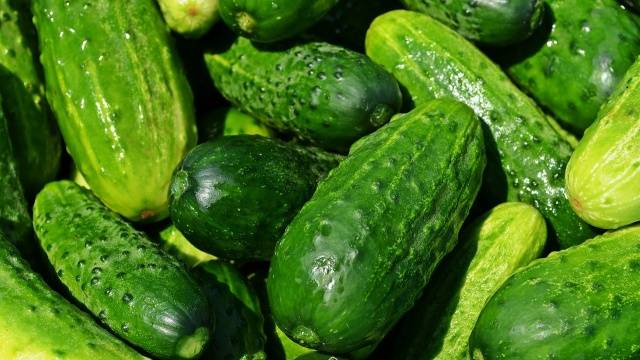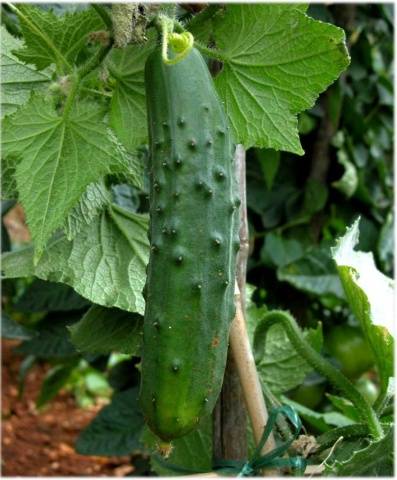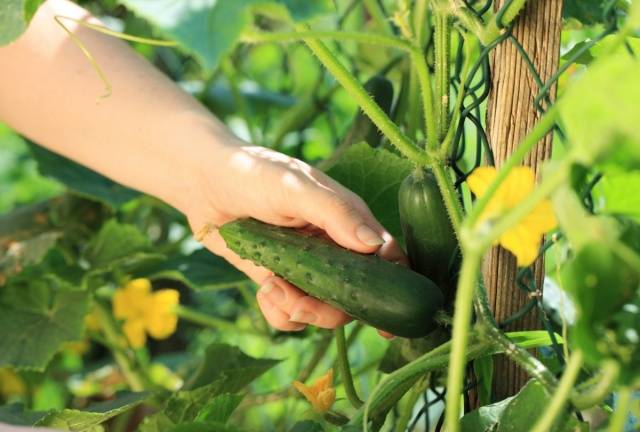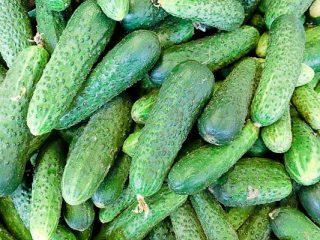Content
Cucumbers are those vegetables whose freshness can be enjoyed throughout the season (from April to October). This “longevity” is given to vegetables by different varieties, which are divided according to the degree of fruit ripening. There are early, mid-season and late cucumbers. At the same time, mid-season varieties occupy the largest niche; they are used more often than others, and there are a number of reasons for this. All the features and characteristics of mid-season cucumbers will be discussed in this article.
Determination of mid-season varieties
The main distinguishing feature of mid-season cucumber varieties is the ripening period of the fruit, which is 45-55 days.
This means that the cucumber begins to bear fruit 45-55 days after the seeds are planted in the ground.
However, this period is very conditional; the speed of ripening of cucumbers depends on many factors, the main of which are:
- quality of seed material;
- soil type;
- greenhouse conditions or planting in an open area;
- timely watering;
- temperature of the earth and air during the day and night;
- absence of bush diseases;
- the climate zone in which the region is located.
All these factors together affect the speed of ripening of the first cucumbers, as well as the yield of vegetables.
Classification of cucumber species
All varieties and hybrids of cucumbers are divided into several categories. After dividing into types according to ripening speed, it is necessary to consider the general classification of varieties. So, like all the others, mid-season cucumbers are divided according to:
- Type of pollination. There are bee-pollinated, parthenocarpic and self-pollinated varieties.
- According to the method of cultivation: greenhouse and ground.
- According to the purpose of the fruit: for fresh consumption, for preservation and universal varieties, suitable for salads and pickling.
Selection of the best mid-season varieties
Before purchasing seeds, you must clearly determine what the cucumbers are for, where they will be planted, and who will pollinate them.
Experienced gardeners say that preference should be given to self-pollinating mid-season varieties for greenhouses, and bee-pollinated varieties for open ground.
Another important feature of mid-season varieties is their poor resistance to temperature changes. Unlike early cucumbers, which are planted in barely warmed ground, seeds of medium varieties are sown in late May - early June, when the soil and air temperatures are normalized and the likelihood of frost is minimized.
Therefore, breeders paid more attention to the disease resistance of medium-sized cucumbers than to their hardening.But the diseases characteristic of cucumbers are not terrible for mid-season varieties; the seeds are treated against the most common “cucumber ailments.”
"Vyaznikovsky 38"
Cucumbers of this variety grow small - 7-9 cm, but round and weighty - up to 130 grams.
One of the bee-pollinated mid-season varieties intended for cultivation in open ground is “Vyaznikovsky 38”. The fruits grow on the 40-57th day after planting the seeds (depending on the region). The seeds are hardened against major diseases and low temperatures.
With artificial hand pollination, the variety can also be grown in a greenhouse; greenhouse conditions increase the yield of cucumbers. The bushes are small with short vines, which improves the ventilation of the stems and prevents them from rotting.
Cucumbers turn out light green with small tubercles. They are equally tasty either fresh or in a jar.
"Competitor"
One of the most persistent and “life-loving” varieties. The cucumber is characterized by strong growth, strong stems can withstand any shock.
The first greens are ready for harvest on the 50th day after the shoots appear. The “Competitor” variety is excellent for mass cultivation of cucumbers in a field or garden.
The greens have a dense skin with large pimples and black thorns, and are not bitter, so they are used in salads and for pickling.
"April F1"
The bushes are distinguished by a large amount of ovary; the first batch of picked cucumbers is the largest part of the entire harvest.You need to collect greens every other day; they are not prone to yellowing and over-ripening.
A representative of mid-season parthenocarpics, this hybrid does not need bees. It can be grown in a greenhouse, on a balcony, or in open ground. The largest yields can be obtained in greenhouse conditions.
The fruits are large, dark green in color and cylindrical in regular shape. There are also pimples, and the length of the cucumber reaches 25 cm. Excellent taste allows the hybrid to be classified as a salad variety, but if necessary, “April F1” cucumbers can be preserved for the winter.
"Nezhinsky"
Nezhinsky cucumber bushes are very powerful, can withstand low temperatures and are resistant to diseases. Suitable for greenhouse cultivation and open ground.
One of the very first varieties. Belongs to bee pollination, differs long fruiting period and high productivity.
The fruits of this cucumber variety are among the best for canning. The cucumbers are medium in size and blue-green in color, with large spines and tubercles.
"Libella F1"
The hybrid is suitable for long-term fruiting; with proper care, fresh cucumbers will appear throughout the season.
Hybrid "Libella" is used for planting in greenhouses and greenhouses. Zelentsy will ripen on the 47-53rd day. Cucumbers have an ellipsoidal shape, small size and white fluff on the peel. The length of the greens reaches 14 cm, and the weight is 140 grams.
The taste of cucumbers is excellent, without bitterness, juicy and aromatic. They can be preserved and cut into salads; when pickled, cucumbers do not lose their elasticity and remain crispy.
"Merry company F1"
A distinctive feature of the “Merry Company F1” variety is the large percentage of gherkins. This fact will definitely please lovers of small pickled cucumbers.
The hybrid is suitable for growing in open ground and under film. Cucumbers grow small, have a regular cylindrical shape and a bright green hue.
"Table"
The strengths of cucumber are high yield and taste.
The name of the variety “Zastolny” speaks for itself - these cucumbers are great for preserving for the winter. You can grow seeds in open ground and in film greenhouses and greenhouses.
Zelentsy are small, cylindrical in shape. Cucumbers are distinguished by a slight waxy coating on the peel and a glossy shine. Light veins appear on the green skin.
"Mother-in-law F1"
The hybrid with an interesting name also belongs to the mid-season varieties. The vegetable develops well in garden plots and in closed greenhouses.
Cucumbers grow small - 7-9 cm, have a beautiful, regular shape, a dark green hue and a dense peel decorated with thorns.
The yield of hybrid cucumbers is high, the pulp and peel are not bitter. Cucumbers "Mother-in-law F1" are equally good for salads and for preservation.
Advice from experienced gardeners
Experienced farmers recommend not to fall for beautiful packaging and not to purchase seeds from an unknown manufacturer. After all, the yield largely depends on the quality of the seed material.
Another subtlety - in regions with late summer it is better to do without early varieties for open ground; they can only be planted in greenhouses. To prevent frost from destroying the ovary, it is better to plant mid-season varieties - let the first cucumbers appear a week or two later, but the harvest will be plentiful and fruiting will be long.




















